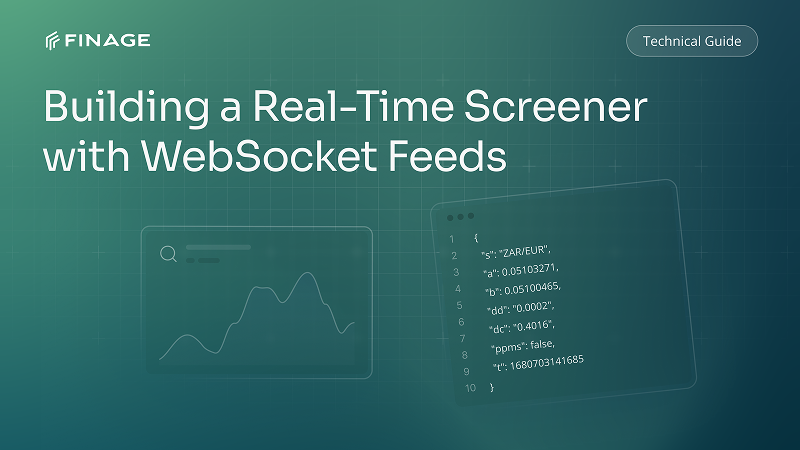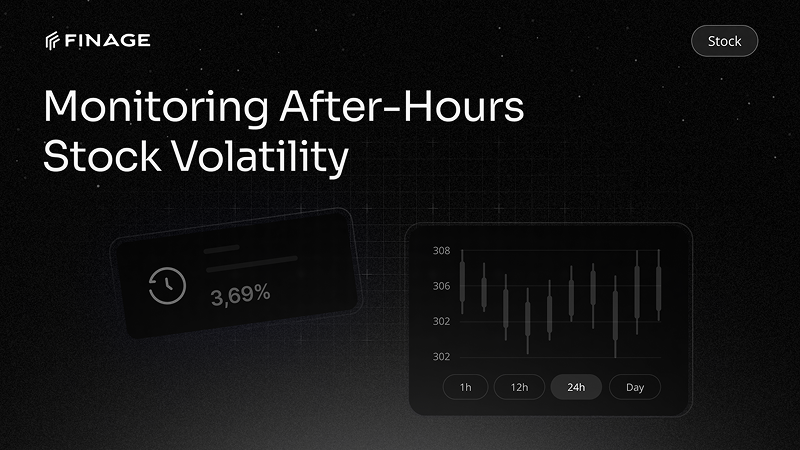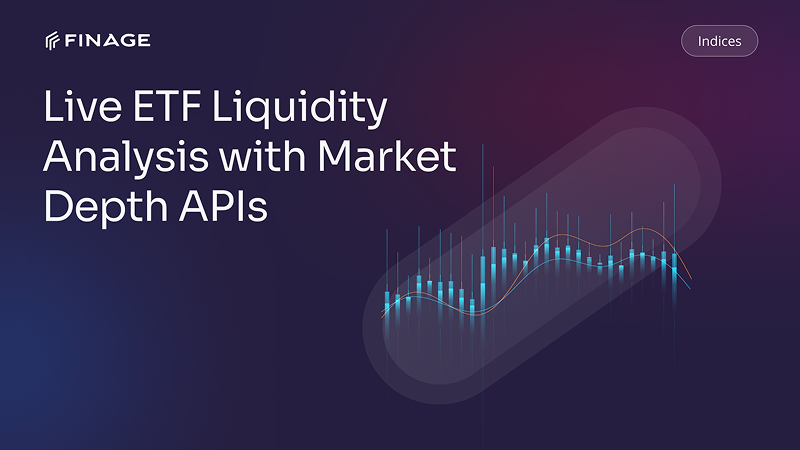Latency in Financial APIs: What Developers Need to Know
8 min read • July 15, 2025

Introduction
For developers building trading platforms, pricing engines, or portfolio analytics tools, every millisecond matters. Users expect lightning-fast updates, responsive dashboards, and seamless execution. But underneath all of that, one technical factor quietly makes or breaks the experience: financial API latency.
Latency isn’t just a backend concern—it’s a core performance metric that shapes how users perceive your product. Whether you're handling real-time stock quotes, order book data, or historical pricing queries, the time it takes to send a request and receive a response has real implications for accuracy, user trust, and even compliance.
In this article, we’ll break down what developers need to know about financial API latency, how it impacts trading app performance, and what to look for when evaluating data infrastructure.
Table of Contents
- What Is Financial API Latency?
- Why Low Financial API Latency Matters in Trading Applications
- Core Factors That Influence Financial API Latency
- How Developers Can Optimize for Low-Latency Architecture
- Why Finage Delivers Consistently Low Financial API Latency
- Final Thoughts
1. What Is Financial API Latency?
Financial API latency refers to the time it takes for a request to travel from your application to a financial data provider’s API—and back. It’s typically measured in milliseconds, and while that might seem insignificant at first glance, in trading and finance, it can have meaningful consequences.
Latency can be broken down into a few core stages:
- Request Time: How long it takes for your app to send a request to the provider’s servers.
- Processing Time: The time the provider’s infrastructure takes to retrieve, process, and prepare the requested data.
- Response Time: How long it takes for that data to travel back to your app and be rendered to the user or consumed by your logic.
When developers talk about financial API latency, they’re usually referring to the total of these stages—and how they impact the performance of systems that depend on accurate and timely market data.
For real-time use cases, such as:
- Live stock dashboards
- Algorithmic trading logic
- Price-based alert systems
- Real-time portfolio analytics
Even a few extra milliseconds can distort execution quality or cause misalignment between what the market is doing and what your app is showing.
That’s why understanding and measuring financial API latency isn’t just a technical detail—it’s a key element of product design and data strategy.
2. Why Low Financial API Latency Matters in Trading Applications
When building trading applications, milliseconds aren’t just technical trivia—they’re competitive leverage. Low financial API latency translates directly to faster insights, quicker actions, and a smoother experience for end users. In fast-moving markets, those factors are not just nice-to-have—they’re essential.
Here’s why low latency matters so much in trading environments:
- Faster Order Execution: Trading apps that rely on stale or slow data risk executing trades at suboptimal prices. Real-time precision is only possible when data arrives quickly and consistently.
- Accurate Price Display: Users expect charts and dashboards to reflect the true state of the market. Any delay—even a small one—can lead to confusion or missed opportunities.
- Automated Trading Logic: If your app includes bots, signals, or algorithmic decision-making, latency becomes even more critical. A delay of 300ms might mean executing a trade after the price has already moved.
- User Trust & Retention: Traders notice performance. A platform that feels slow or out-of-sync with the market won’t keep active users for long. Low financial API latency builds trust in both your tech and your brand.
- Risk Management: Real-time alerts and position monitoring depend on timely data. The longer the delay, the more risk exposure goes undetected.
Simply put, low latency helps users react faster, see more clearly, and trade more confidently. For developers, it means building products that feel responsive, competitive, and built for real-world financial decision-making.
3. Core Factors That Influence Financial API Latency
Not all latency is created equal. Even when two platforms claim “real-time” data, their actual responsiveness can differ significantly based on how their systems are built. To understand and manage financial API latency, developers need to look beyond just the speed of the internet connection.
Here are the core factors that typically influence it:
- Server Location & Proximity: If your trading app is hosted in Europe but your data provider’s servers are in the U.S., geographical distance can introduce latency. The closer the server, the faster the round trip.
- Network Infrastructure: Congested routes, inefficient routing, or poor peering agreements between data centers can slow down traffic even if the physical distance is short.
- API Architecture: Some APIs batch data, delay responses under load, or rely heavily on caching. A well-optimized financial API uses lightweight formats, supports streaming where necessary, and avoids bottlenecks in request handling.
- Delivery Method (REST vs WebSocket): REST is typically used for snapshot or on-demand data. But for real-time updates, a WebSocket connection significantly reduces financial API latency by maintaining a persistent, low-latency channel between the client and the server.
- Load Balancing & Redundancy: Under high traffic, poorly balanced infrastructure can suffer latency spikes or even drop data. High-performance providers ensure smooth response times even during market surges.
- Rate Limiting & Throttling: Some platforms slow down requests when usage exceeds certain thresholds. If your app isn’t built to handle rate caps, latency can appear as a delay or even a temporary block.
Understanding these factors helps developers not only choose the right financial API provider, but also design systems that minimize delay, reduce user frustration, and increase the reliability of trading operations.
4. How Developers Can Optimize for Low-Latency Architecture
While some latency factors depend on your data provider, there’s still a lot you can do on your side to reduce response times and improve performance. Developers play a crucial role in minimizing financial API latency through smart architectural decisions and efficient implementation.
Here are several proven strategies:
- Use Persistent Connections: For real-time use cases, choose WebSocket streams instead of repeated REST requests. This avoids the overhead of re-establishing connections and reduces latency for continuous updates.
- Choose Regionally Aligned Servers: When deploying your app, try to match its hosting region with your data provider’s closest data center. For example, if Finage offers EU-based endpoints, deploy your app on an EU-based cloud instance as well.
- Implement Caching for Non-Time-Sensitive Data: For reference data, metadata, or less frequently changing values, caching prevents unnecessary requests and reduces load on your app and the provider.
- Minimize Payloads: Only request the data fields you need. Excessive fields increase response size and parsing time, which adds to perceived latency, especially on client-side applications.
- Handle Rate Limits Gracefully: Build your system to anticipate and adapt to throttling or rate-limit responses. Use retry logic with exponential backoff to avoid additional delays or blocked sessions.
- Monitor Latency in Real-Time: Treat financial API latency as a live metric—not a one-time benchmark. Use monitoring tools to track performance, alert on spikes, and uncover regressions over time.
These practices not only improve speed, but also stability. In trading, a reliable platform can be just as valuable as a fast one. Developers who invest early in low-latency design principles can create apps that scale cleanly, serve users better, and remain competitive over the long term.
5. Why Finage Delivers Consistently Low Financial API Latency
When developers evaluate market data providers, performance isn’t just about what data you get—it’s about how quickly and reliably you receive it. Finage is built with low-latency architecture at its core, giving trading platforms the speed and stability they need to thrive in real-time environments.
Here’s how Finage ensures consistently low financial API latency across all major asset classes:
- Global Infrastructure: Finage operates from strategically placed data centers across the U.S., UK, and EU. This means regional requests are routed efficiently, reducing round-trip times and ensuring location-optimized delivery.
- WebSocket Streaming: For applications that require real-time updates—like live quote boards or algorithmic engines—Finage provides persistent WebSocket connections that minimize delay and eliminate polling lag. See the WebSocket API documentation for details.
- Optimized REST Endpoints: When using REST APIs for on-demand data, Finage responds with clean, compact payloads that minimize parsing time and keep apps responsive.
- Unified Multi-Asset Access: Whether you’re pulling data on stocks, forex, or crypto, everything flows through a consistent, streamlined system. That means no added latency from format mismatches or fragmented integrations.
- Developer-First Design: Fast data only matters if you can work with it easily. Finage’s APIs are designed for clarity, with versioned documentation and responsive support to help teams integrate without friction.
If your product depends on real-time decision-making, financial API latency isn’t something you can afford to ignore. Finage gives you the performance edge—without sacrificing flexibility or scale.
Final Thoughts
Latency isn’t just a backend metric—it shapes how your users perceive speed, accuracy, and trust in your trading application. For developers and fintech teams, understanding and addressing financial API latency is a crucial step toward building responsive, reliable, and competitive products.
From execution quality to real-time insights and user experience, milliseconds make a difference. That’s why choosing the right data infrastructure is just as important as writing efficient code or designing intuitive interfaces.
Finage is designed to help you succeed in this environment. With globally distributed infrastructure, real-time WebSocket streams, optimized REST endpoints, and a unified multi-asset API framework, Finage delivers low-latency data where and when it matters most.
Whether you’re developing a real-time dashboard, building a trading algorithm, or scaling a global fintech product—Finage gives you the performance foundation you can build on with confidence.
Ready to experience what low-latency financial data really feels like? Explore the Finage API documentation and start integrating with speed.
Claim Your Free API Key Today
Access stock, forex and crypto market data with a free API key—no credit card required.

Stay Informed, Stay Ahead
Finage Blog: Data-Driven Insights & Ideas
Discover company news, announcements, updates, guides and more


